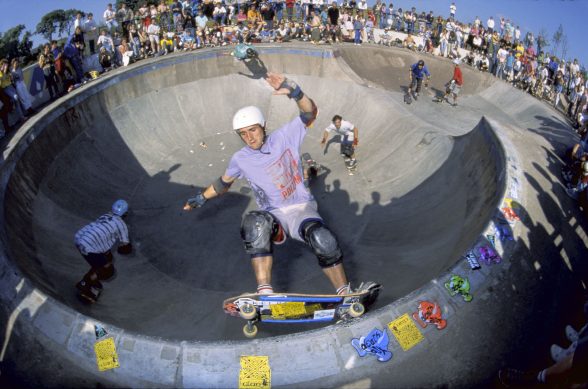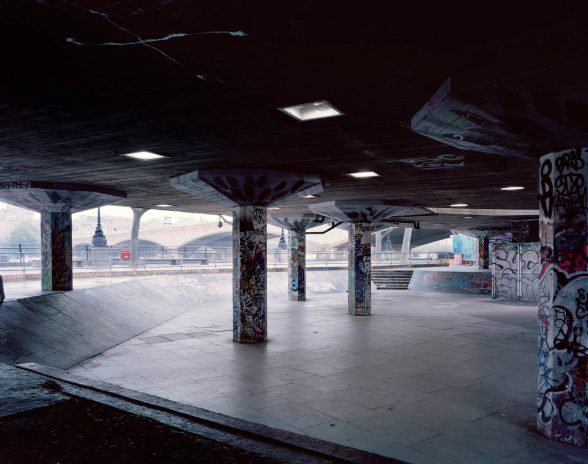This website uses cookies
This website uses cookies to enable it to function properly and to analyse how the website is used. Please click 'Close' to accept and continue using the website.



Image credit: Iain Masterton
The ‘Livi’ Skate Park in Livingston New Town, West Lothian (1981), has just been listed at Category B, following support from C20 Society, the local authority, the Scottish skate community and a public consultation. The designation by Historic Environment Scotland makes it the first listed Scottish skatepark and only the second in the UK, after the ‘Rom’ in Hornchurch, Havering, was recognised at Grade II in 2014.
Skateboarding originated in the surf culture of southern California during the 1950s and became very popular in Britain during the ‘second wave’ boom of 1976-77. The idea for a purpose built skatepark was first presented to Livingston Development Corporation by skater Kenny Omond. After an extensive study of US skateparks and conversations with skateboarders, established architect Iain Urquhart designed what was to become the ‘Rock and Roll’ (more commonly known as ‘the Livi’) skatepark, opening in 1981.
As a result of this unusually thorough gestation and municipal funding, the skatepark is an authentic reflection of the skate culture of the 1970-1980s. Omond later designed an extension in 1992, a time when very few skateparks were being built. The Livi achieved international renown within the skate scene from its earliest days due to its scale, ambition and quality. Known for its very deep Double Bowl and finely-tuned transitions, the Livi is the earliest and best example of a purpose-built skatepark in Scotland.

Image credit: © Tim Leighton-Boyce, courtesy The Read and Destroy Archive.
Brutalist landscapes
During the ‘second wave’ skating boom of the mid-late 1970s, skateboarding was rapidly taking over British parks, pavements, underpasses and shopping precincts, as the built-environment of New Towns and much Post-War architecture proved particularly suitable for wheeled exploration. In 2013-14 the Society enthusiastically backed the successful ‘Long Live Southbank’ campaign, to save the historic skaters undercroft at London’s Southbank Centre from redevelopment – one of the earliest adopted urban spaces used for skating in the UK.
In response to growing concerns around public safety, an entirely new architectural typology was developed by the commercial sector – an undulating concrete landscape with features given strange names like “mogul”, “half-pipe”, “pool” and “snake run”. A cross between golf clubs and theme parks, these skateparks offered riders a place of belonging and community mixed with challenge, excitement and discovery.
Over 120 UK skateparks of various size and quality were built during this period; two of the best examples are now nationally listed, and the Society will continue to advocate for protection of these pioneering sites of sporting heritage.
Look out the the forthcoming issue of C20 Magazine 2024-1, for a feature by architectural historian Iain Borden on the development of Britain’s purpose built skateparks.

Image: Nicholas Constant

Become a C20 member today and help save our modern design heritage.